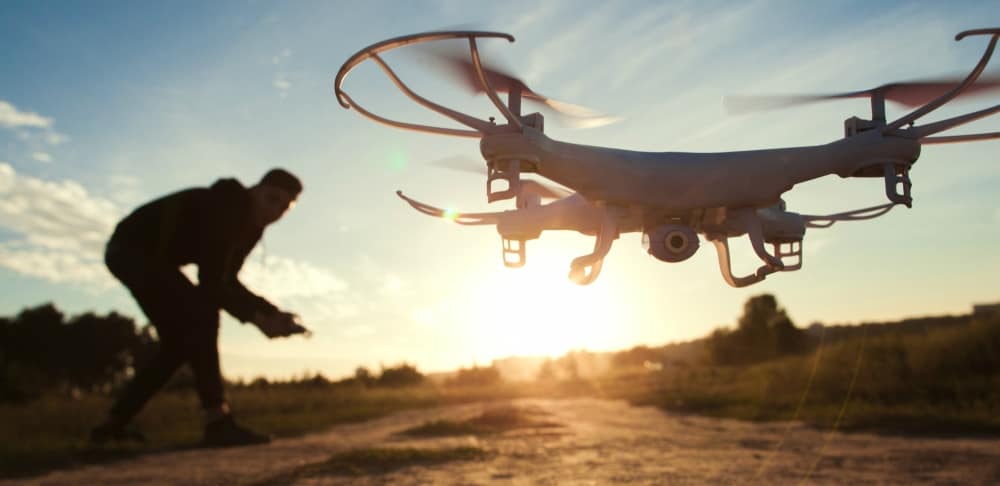
ERAU UAS Flight Policy
The flying of any/all Unmanned Aircraft Systems (UAS) on the ERAU Prescott campus regardless of size, type, configuration, speed, or altitude will be governed by the policies outlined within the content available on this webpage. The primary purpose of these policies is to address safety and primary concerns in addition to ensuring compliance with Federal Aviation Regulation (FAR) Part 107 or the Academy of Model Aeronautics (AMA) guidelines as appropriate.
These policies apply to any/all persons, groups, organizations, clubs, ERAU faculty/staff/students, as well as members of the general public, whether formally invited or otherwise, while on the ERAU PC campus. This includes operations of Unmanned Aircraft System in the airspace immediately above the Prescott campus including both the developed and undeveloped portions of the campus.
Anyone operating a UAS in the airspace above the Embry-Riddle Aeronautical Prescott Campus does so with the explicit understanding that they have read and will comply with all applicable sections of this policy and its attachments. Deviations from any part of this policy will be done only under operator in-flight emergency authority or through a formal preapproved waiver process.
UAS "Do's" and "Don'ts"
The following is a list of what to do and what not to do while operating UAS on Embry-Riddle Aeronautical University, Prescott Campus:
| DO | DON'T |
|---|---|
| DO comply with ERAU UAS Policies and Altitude Restrictions, Federal Aviation Regulation (FAR) Part 107, and Academy of Model Aeronautics (AMA) Rules | DON'T fly anywhere other than the R/C Field and Lower Intramural Field without approval via UAS Campus Request Form. |
| DO wear ear and eye protection while operating UAS. | DON'T fly a UAS without registering it with the FAA. |
| DO complete a UAS Risk Assessment before every flight; consider all risks to UAS operations. | DON'T wear open toed shoes (sandals); wear appropriate attire for UAS flight. |
| DO utilize a Visual Observer (VO) or spotter, and use constant verbal communication. | DON'T hand catch, hand launch, or land/catch a UAS unless necessary for specified UAS operations. |
| DO takeoffs and landings from prepared surfaces. | DON'T drone race anywhere but the R/C field. |
| DO respect the privacy of others when flying UAS. | DON'T fly First Person View (FPV) flights without a visual observer. |
| DO insure all spectators/observers will remain well clear of the runways and launch areas during takeoffs and landings. | DON'T fly over people or vehicles. |
| DO stay away from spinning rotors and propellers. | DON'T launch or recover a UAS closer than 15 feet from any persons. |
| DO stay vigilant when flying UAS and maintain efficient "see and avoid" practices. | DON'T lose visual line of sight. |
| DO complete a UAS preflight checklist and inspect unmanned aircraft before every flight. | DON'T fly when having any doubt about UAS operations. |
| DO keep an eye on weather and check weather products (METAR/TAF). | DON'T fly recklessly, while under the influence, or at night. |
| DO have fun flying UAS. | DON'T interfere with any manned operations. |
| DON'T fly over ERAU sporting events. |
UAS See and Avoid Tips
The primary means to avoid damage, injury, or collisions between aircraft while flying within our National Airspace System (NAS) is "See and Avoid". Vigilance must be maintained by each person operating an aircraft (unmanned or manned) so as to "see and avoid" other aircraft. The following are unmanned aircraft system (UAS) tips to help maintain efficient "see and avoid" practices:Contact Us
Prescott, AZ 86301
sUAS Flight Contacts
Mike Canada
Associate Professor of Unmanned Aerial Systems
College of Aviation
928-777-6692
canadak@erau.edu
Dennis Wren
Assistant Professor Unmanned Aerial Systems
College of Aviation
928-777-6596
WREND@erau.edu
